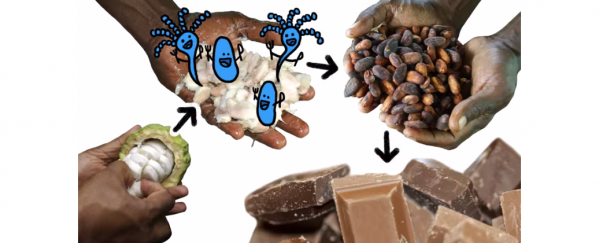
Coffee, bread, beer, cheese, and even chocolate are home to millions of microbes. And these tiny bacteria and fungi aren't just a necessary evil that we have to put up with in our favourite foods - they're actually responsible for the unique tastes that we love.
But fortunately, about 99 percent of the microbes we know about are harmless to humans. But what about that remaining 1 percent? Those guys are nasty enough that our ancestors - and the ancestors of various other mammals and birds - evolved a natural sense of revulsion towards stuff that might harbour germs. If it looks bad and smells disgusting, we're wired to stay well away from it.
But credit where credit's due - if some of the 99 percent of good microbes get into the food first, they can keep the bad guys at bay. For example, says MinuteEarth, if we leave meat out, it'll attract all kinds of terrible microbes that can make us super-sick. But if we cover the meat in salt, we can increase populations of salt-loving, friendly bacteria, and cut down on their bad, salt-sensitive relatives. A few months of preserving later, we get salami (delicious!) instead of Salmonella (deadly!).
It's basically 'controlled spoilage', says the latest episode of MinuteEarth, and many of the best results - think wine and cheese - were discovered by our ancestors thousands of years ago, sometimes by accident, sometimes because of desperation.
But how do these good microbes not only make our spoiled food okay, but even better than their non-spoiled counterparts? Watch the latest episode of MinuteEarth above to find out.
Source: MinuteEarth
